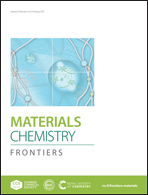Nanoscale metal–organic framework composites for phototherapy and synergistic therapy of cancer
Abstract
Phototherapy, a light-induced method, involves photodynamic therapy (PDT) and photothermal therapy (PTT). Recently, PDT and PTT have attracted significant attention due to their non-invasiveness, minimal side effects and high spatial selectivity upon localized irradiation at the tumor sites. Owing to the unique characters of nanoscale metal–organic frameworks (nMOFs) associated with excellent loading, versatile surface chemistries, enhanced permeability and retention effect and biodegradability, nMOFs are very suitable for biomedical applications. Importantly, the periodic porous structure of nMOFs can effectively avoid the self-aggregation and self-quenching of photosensitizers in PDT, and enhance the photothermal responses and heat stability of photothermal agents in PTT. These specific merits of the nMOFs have enabled them as an ideal platform for cancer phototherapy. This review mainly discusses and summarizes the advancement of MOF-based nanocomposites as a therapeutic platform for cancer phototherapy or synergistic phototherapy within the last five years. In addition, this review also focused on the interrelationship between the structure and application of MOF-based composites. The remaining challenges and future opportunities in this field are also highlighted.

- This article is part of the themed collection: 2021 Materials Chemistry Frontiers Review-type Articles


 Please wait while we load your content...
Please wait while we load your content...